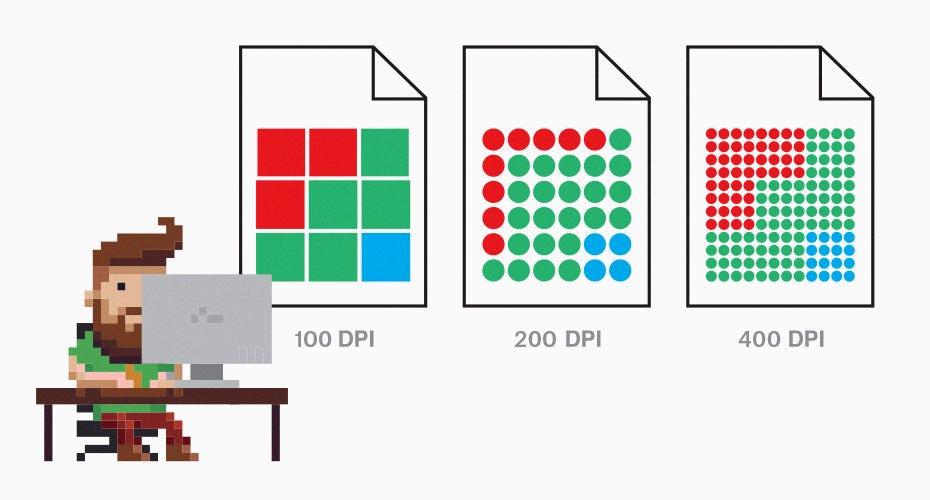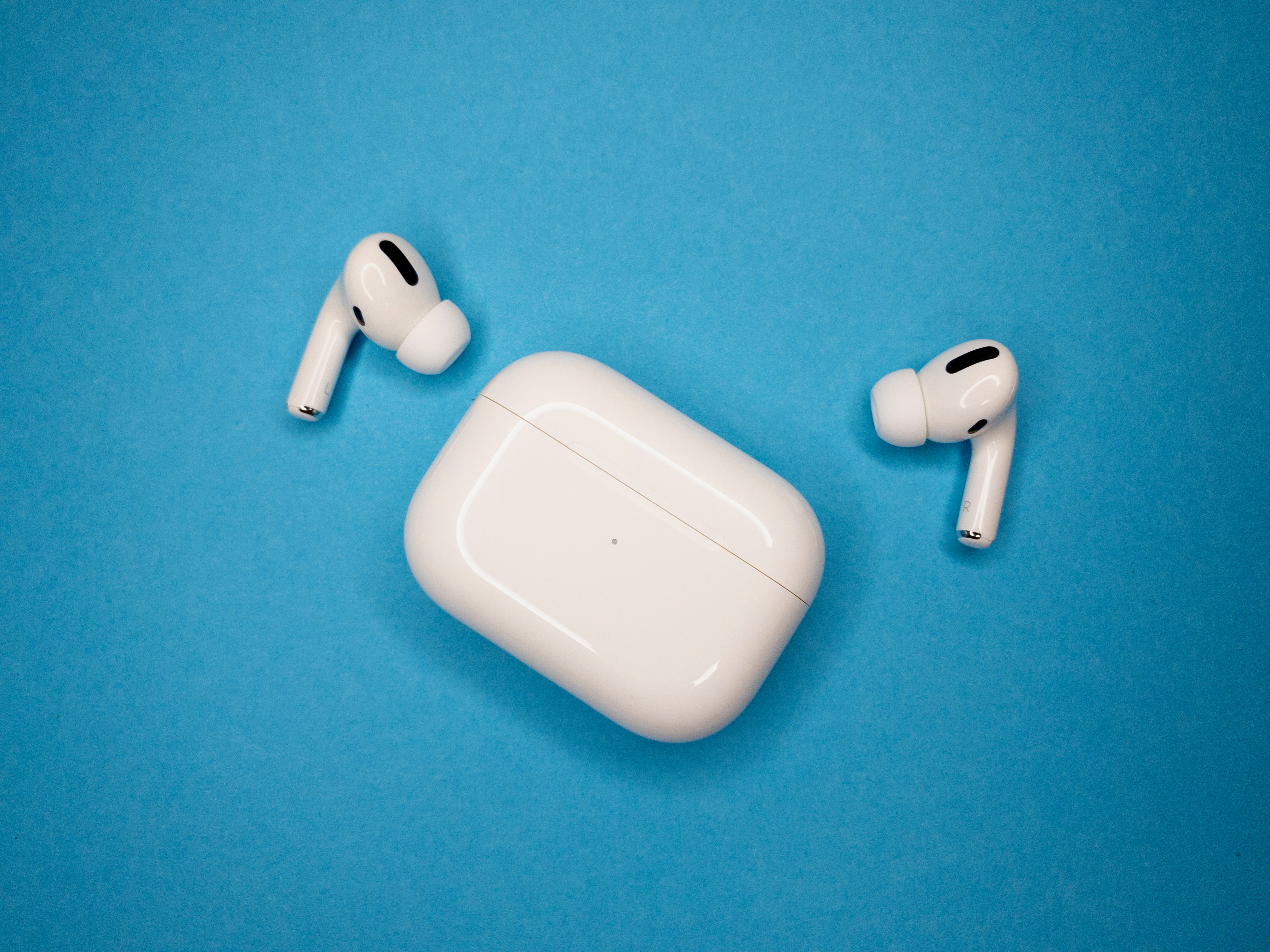DPI stands for dots per inch and it is a measure of the resolution of an image or printer. It describes how many individual dots of color a printer or display can produce in a single inch. The higher the DPI, the more detail an image will have, and the better it will look when printed or displayed on a monitor.
Why is DPI important?
DPI is important because it affects the quality of images and prints. Images with higher DPI will be sharper, wile lower DPI images will appear blurry or pixelated when printed. High-resolution images are also necessary for printing posters, banners, and other large format prints.
How to Check DPI of an Image?
Checking the DPI of an image can be done with some simple tools. If you’re using Windows, you can right-click on an image file and select “Properties” from the context menu to view its properties. Under the “Details” tab, you will find information about the file size and resolution (in terms of DPI).
On Mac OS X, you can open an image in Preview and select “Tools” > “Show Inspector” from the menu bar to view its details. Under the “Image” tab, you will find information aout its size and resolution (in terms of DPI).

For both platforms, you can use Adobe Photoshop to check an image’s properties by selecting “Image > Image Size” from the menu bar. Here you will find information abot its dimensions (in terms of pixels) as well as its resolution (in terms of DPI).
In conclusion, understanding what DPI is and how to check it can help ensure that your images are crisp and clear when displayed or printed.
Finding the DPI of an Image
Finding the DPI (dots per inch) of an image is a simple process. First, locate the image you wish to check and right-click on it. This will bring up a menu of options; select “Properties” from this menu. On the Properties page, select the “Details” tab. Here you will find information about the image, including its DPI value. The DPI is labeled “Horizontal Resolution” and “Vertical Resolution” in this section. It is important to note that if the image was not created with a specific DPI value, then this field will be blank or display “n/a”.
Ensuring an Image is 300 DPI
To make sure a picture is 300 DPI, open the image in an image editing program such as Adobe Photoshop. Then, go to File > Open > Choose your file. Next, click Image > Image Size and set the resolution to 300 if it is less than 300. To ensure that the image remains sharp after resizing, choose the “Preserve Details (enlargement)” option from the drop-down menu. Finally, click OK to save your changes.
What is the Resolution of 300 DPI?
300 DPI stands for “dots per inch” and is a measure of resolution used to determine the quality of an image when printing. It indicates how many dots of ink are used to print a single inch of an image. At 300 DPI, an image will appear sharp and crisp, making it considered a high-resolution image. When printing, it is important to use images with resolution at least as high as 300 DPI for the best results.
Calculating the Number of Pixels at 300 DPI
300 DPI (dots per inch) is a measure of resolution. It refers to the number of individual dots of color that can be placed in a line within the span of 1 inch. Generally, 300 DPI is considered to be the minimum resolution needed for high quality print graphics and photographs. In terms of pixels, 300 DPI is equivalent to 3000 pixels per square inch (1 inch² = 300 DPI × 300 DPI = 90,000 pixels). This means that if you have an image that is 1 inch wide, then it needs to be at least 3000 pixels wide in order to maintain 300 DPI when printed.
Converting a JPEG to DPI
To convert a JPEG file to DPI, you need to use an image editing program. The most popular image editor is Adobe Photoshop, wich lets you adjust the DPI of any JPEG file. Here’s how to do it:
1. Open your JPEG file in Photoshop.
2. Select “Image” from the top menu bar and then select “Image Size” from the drop-down menu.
3. In the Image Size window, make sure that “Resample Image” is checked and set the resolution to your desired DPI (Dots Per Inch).
4. Click OK and save your file with a diferent name or in a different format if you wish.
That’s it! You have successfully converted your JPEG file into a higher-resolution image with the desired DPI!
Changing the DPI of a JPEG
To change the DPI of a JPEG, open the file in Adobe Photoshop. Once opened, click on Image > Image Size. This will bring up a dialogue box where you can change the width and resolution of your image. Adjust the width as desired and then select the desired DPI from the Resolution drop-down menu (300, 400, or 600). Click OK to save your changes and apply them to your JPEG. You can also adjust brightness and contrast if desired by ging to Image > Brightness/Contrast and adjusting the levels accordingly. After making all desired changes, save your JPEG and it should now be at the new DPI resolution you specified.
Is 72 DPI Considered High Resolution?
No, 72 DPI is not considered high resolution. High resolution images are typically 300 DPI or higher and contain more pixels per inch than low resolution images. Low resolution images look blurry or pixelated when printed, while high resolution images appear sharp and clear. For the best printing quality, it is alays recommended to use high resolution images.
Comparing DPI: 72 DPI vs 300 DPI
No, 72dpi is not better than 300dpi for printing purposes. When images are printed, it is important that they are at least 300dpi in order to achieve a sharp and clear printed output. Low resolution images (72dpi) can appear pixelated and low-quality when printed. When designing graphics for commercial printing purposes, you sould always use an image with a resolution of at least 300dpi.
What is a 300dpi JPEG Image?
A 300dpi JPEG (Joint Photographic Experts Group) image is a digital photograph or graphic that has been saved in a file format that is designed to produce high quality prints. The “dpi” stands for “dots per inch” and refers to the resolution of the image. A 300 dpi image contains 300 pixels per inch, meaning that it contains 90,000 pixels per square inch. This high resolution ensures that when printed, the image appears sharp and crisp with all details visible. When printing an image at lower resolutions, such as 72 dpi or 96 dpi, the resulting printed output can appear blurry or pixelated. Therefore, if you want to print an image with optimal quality, it should be saved as a 300dpi JPEG befoe printing.
What DPI Is Required for a 1920×1080 Resolution?
For a 1920×1080 resolution, you will need an optimal DPI setting of 800-1000. This is beause the higher the DPI, the more precise and accurate mouse movements will be. A higher DPI setting also means that your cursor will move faster than with a lower setting. With a 1920×1080 resolution, a DPI setting of 800-1000 is recommended for most users in order to get the best experience.
Calculating DPI in Pixels
To calculate the DPI (dots per inch) of an image in pixels, you will need to first measure the width and height of the image in inches. Then, measure the width and height of the image in pixels. Once you have both measurements, divide the pixel width and height by their respective measurements in inches. The resulting numbers represent the horizontal and vertical DPI of your image. For example, if your image measured 4 inches wide and 6 inches tall, and was 2000 pixels wide by 3000 pixels tall, you wuld calculate your horizontal DPI as 2000 / 4 = 500 dpi, and your vertical DPI as 3000 / 6 = 500 dpi.
Finding the DPI of a Picture on a Phone
To find the DPI of a picture on your phone, you’ll need to open the picture in an image editing app. Once the image is open, tap on the thee dots in the top right corner of the screen and then select ‘Details’. You will then see a section for ‘Image’, which will give you the dimensions of your photo, as well as its DPI (dots per inch) resolution. To make sure you’re seeing an accurate DPI reading, it’s best to check this information against other image editing apps like Adobe Photoshop or GIMP.
Understanding DPI Image Resolution
DPI, or dots per inch, is a measure of the resolution of a printed document or digital image. It refers to the number of individual dots of color that can be placed in a line within the span of one inch. A higher DPI indicaes more detail and higher image quality; while a lower DPI indicates less detail and lower image quality. For example, an image with 72 DPI will appear blurry when printed out; whereas, an image with 300 DPI will appear sharp and clear when printed. The most common DPI for digital images is 72 for web use and 300 for printing.

Source: 99designs.com
Changing a Photo from 72 DPI to 300 DPI
Yes, you can change a photo from 72 DPI to 300 DPI. The best way to do this is in Adobe Photoshop. First, open the photo in Photoshop and uncheck the “Resample” checkbox. Then, type 300 into the Resolution box. This will automatically adjust the inches in Width and Height according to the desired resolution of 300 DPI. Keep in mind that anything lower than 300 DPI (like 72 DPI for example) may not print at its highest quality. It’s important to remember that changing the resolution of an image does not change its physical size – it only affects how large it appears on screen or when printed. Therefore, you should only increase the resolution if you plan on printing your image, otherwise thre is no need to do so.
Finding the DPI of an Image in Windows 10
Windows 10 provids a few different ways to quickly check the DPI of an image. The easiest way is to right-click on the image file and select Properties, then click on the Details tab. This will show you the Vertical resolution and Horizontal resolution, which will show you the DPI of your image.
You can also find the DPI by viewing the file in Preview mode. To do this, open the image in Preview from File > Open or by double-clicking it. Then select Tools > Show Inspector from the menu bar. This will open a window with a list of properties for your image, including its DPI.
Converting DPI to Pixels
72 DPI stands for “dots per inch” and is a measure of resolution. It means that if you set your image to 72 DPI, it will have 72 pixels per inch. This means that an image with dimensions of 1 inch by 1 inch would have 72 pixels in total. If you double the dimensions to 2 inches by 2 inches, then the total number of pixels would be 4 times as much – 288 pixels. The same principle applies to any other resolution – i.e., if you set your image to 300 DPI, then it will have 300 pixels per inch instad of 72 pixels per inch. Ultimately, this affects the size of your final image – a higher DPI will result in a larger file size but also a sharper and more detailed image.
The Benefits of 600 DPI Over 300 DPI
While 600dpi printing may be able to produce more detailed prints, it is not necessarily better than 300dpi printing. Depending on the image and the desired output, 300dpi can be just as effective for most projects. Additionally, 600dpi printing takes longer and puts more strain on the print head, reducing its lifespan. However, if you need a very detailed image or require extremely high resolution, then 600dpi may be a better choice. Ultimately, it comes down to the specific project and your needs.
Conclusion
DPI (Dots Per Inch) is a measure of image resolution that can be used to describe the quality of an image or how detailed it appears. DPI is determined by the number of dots that are placed in one inch of space. A higher DPI means that more dots are present per inch and will result in greater sharpness and detail in the image. The standard for digital images is 300 DPI, alhough higher resolutions are available. When printing, a higher resolution will produce a better quality output. DPI is an important concept to understand when printing and creating digital images as it plays an important role in determining the final quality of the output.








